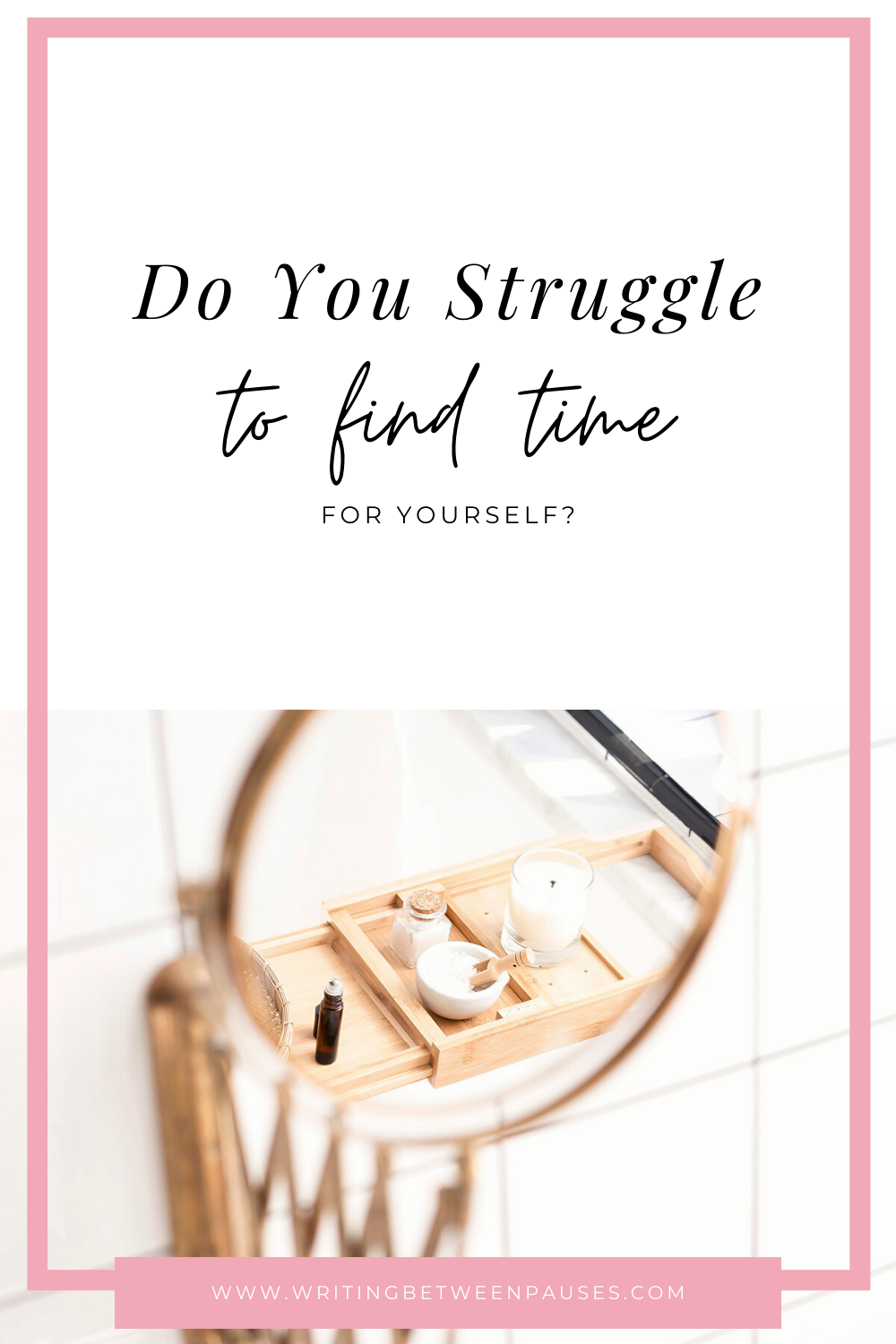It feels like a universal problem: women put themselves last on the list when it comes to self-care or just basic necessities. Time slips and suddenly, we find ourselves 4 years postpartum and not having been to the doctor for, well, that entire time. We skip getting ourselves new things in favor of the others in our life. We fold the laundry while listening to a podcast instead of just relaxing. There are a thousand little ways that people, but especially women, find themselves putting the needs of others before themselves.
This isn’t necessarily a bad thing.
But when taken to an extreme, it definitely can be.
Caring about other people isn’t a problem. The problem is not having boundaries when it’s too much.
One of the things about setting boundaries is this: you have to keep your boundaries, even when it’s hard, even when it’s challenging, even if sometimes you want to do something. (To read all my posts about Setting Boundaries, click here!)
When it comes to taking more time for yourself, you’ll need to set boundaries around your work life, personal life, and home life. That’s not easy work, but it’s worth it in the long run. Let’s talk through a few ways to set boundaries and have more time for yourself.
1. Say no to projects.
You don’t have to say no to every project—but if you just plain don’t have time in your schedule (and you know when that’s true—you just do!), it’s ok to say no. In fact, it’s best for you to just say no to those extra projects. As fun as they might be. As good as they might before you. As much as you might want to help a friend or a favorite client.
Say no to the extra projects. That’s a boundary.
You don’t have to say, “No, sorry!” and that’s it. Here are a few ways to say no to extra projects to help you out:
“Thank you for thinking of me! This sounds like a really great project. However, my schedule is full until January. If it can wait until then, I’d love to take it on.”
An alternative ending: “My schedule is full until January. I have another friend that I think might be perfect for this project. Can I put you in contact with them?”
That’s it! Here’s a run down of what to say if your situation doesn’t fit that scenario:
Acknowledge the feelings. (This sounds fun! or I’m so glad you thought of me, that’s so kind of you.)
Communicate the boundary. (My schedule is full; I don’t have time; I want to do a good job, but can’t because of my schedule.)
Provide an alternative.
2. Schedule your chores.
I know this sounds not-so-fun, but it’s the best advice I can give you. If you, like me, struggle to make time for yourself, but also struggle to prioritize housework, then this is for you.
When it comes to housework, I want a beautiful, clean, organized home. And about 65% of the time, I have it. But it’s usually because I fall behind in what I’m doing, get distracted, or get burnt out—so I do one big cleaning every other week instead of cleaning throughout weeks to keep my home nice from the start.
A few months ago, I started setting a timer for every evening at 6pm. I drop whatever I’m doing and go clean the kitchen: finish the dishes, wipe down the counters, clear away the clutter, sweep the floors if I need to. It takes maybe 30 minutes, but it helps me feel just a little more productive. In the morning, I set a very similar timer to quickly clean the bedrooms: make the beds, pick up toys/blankets/etc, clean the bathroom toilets if they need it, and whatever else needs done in that 20-30 minute window.
It’s been hugely helpful to set aside these 2 windows every day to get the chores done that help my house feel the cleanest. It makes weekend cleaning way less insurmountable and the more I include these in my schedule, the more they become part of my routine.
Then, every Sunday morning, I do a full house cleaning: vacuuming, sweeping, mopping, the works. It makes it easier to have taken care of some of that work throughout the week. This means once I’m done with a 2-hour cleaning binge on Sunday morning, I have all the time in the day to do whatever I want.
3. Pick your battles carefully.
If you have kids, you know that quality time alone is a challenge. Our kids love us and they want to be around us. It’s hard to tell your kids you want time alone—they don’t understand this concept because they are almost universally more social than us. (Sometimes I think about the fact that I used to go to school and be social every single day and it’s like… shocking.)
That being said, sometimes it’s about picking your battles with kids. If you need quality time to recharge, is there a way you can do this with your kids?
Here’s a scenario: Forrest really can’t fall asleep alone. He’s just at a very specific age, and of a very specific temperament, where this is a challenge for him. I could fight with him to stay in bed every night for 2 hours until he passes out and have 0 time for myself… OR I could let him lie beside me in bed while I listen to music and play Animal Crossing. Which sounds more pleasant to you?! That’s what I thought! And I agree.
Pick your battles. What will you fight your kids on? Helping with chores, keeping their rooms clean, not asking you to do things that they can easily do themselves. What will you night fight your kids on? Things that will make your life harder, take up more of your time, or generally make the house a miserable place to be. This will be different for every parent and it’s really up to you. But I know you have it in you to make these choices! Set your boundaries, communicate them, and choose what to fight about.















_crystals_White_FX7482_01_standard.jpg)

















